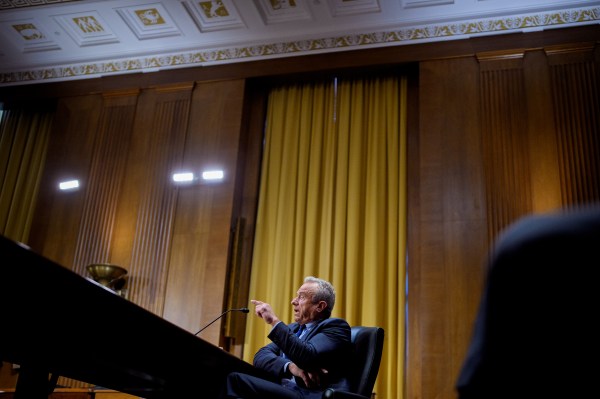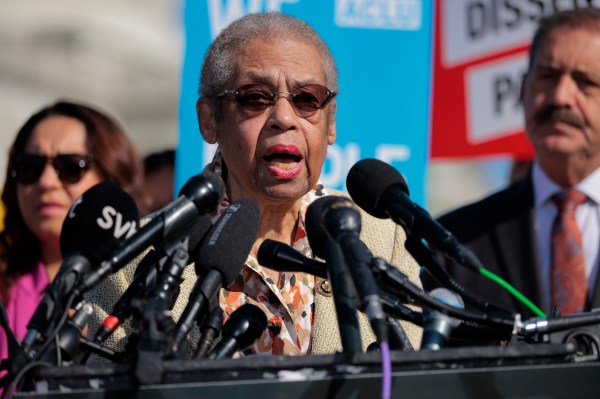The U.S. Supreme Court will hear oral arguments Monday in Harrington v. Purdue Pharma to determine whether a bankruptcy court can discharge claims against a party that did not itself file for bankruptcy.
In 2019, Purdue Pharma was mired in thousands of lawsuits across the country with business partners, states, hospitals, and victims of opioid addiction and their family members due to the company’s production and marketing of OxyContin, a controlled substance prescribed for managing pain. Purdue filed for Chapter 11 bankruptcy, which allowed it to pause all ongoing lawsuits and bring the parties into a single negotiation.
After two contentious years, the bankruptcy court approved Purdue’s plan of reorganization, which detailed how much the company’s creditors would receive. The plan also required the Sackler family, longtime owners of the company, to pay approximately $4.5 billion into the settlement funds (later negotiations increased this to $6 billion). In exchange, the Sacklers would be released from their opioid-related civil liability.
Critics of the plan appealed to the U.S. District Court for the Southern District of New York, arguing that the bankruptcy code does not authorize releases for non-debtors such as the Sacklers. The court reversed the bankruptcy court’s confirmation of the plan, but the 2nd U.S. Circuit Court of Appeals reversed the district court’s decision.
Who are the parties?
The debtor is the central character in any bankruptcy case and in Purdue’s case are the 24 corporate entities that originally filed for bankruptcy. While some members of the Sackler family were, at various times, shareholders, board members, or executives at Purdue and have been deeply involved in the bankruptcy case, they are not debtors. Without the controversial non-debtor releases, they could still be sued personally for their roles in the company’s pre-bankruptcy misconduct (which included guilty pleas to federal charges related to its marketing of OxyContin).
Creditors are the other main players in bankruptcy. This broad category includes any person or entity to which a debtor owes or might owe money when the case begins. Some of Purdue’s major creditors are insurers, hospitals, distributors, governmental entities, and victims of opioid addiction.
The federal government is also represented in every bankruptcy case by the Office of the U.S. Trustee, part of the Department of Justice tasked with monitoring bankruptcy cases. In this case, the U.S. trustee is one of the parties objecting to the Sackler releases.
Why is bankruptcy an option in cases like Purdue’s?
Bankruptcy allows a debtor facing massive tort liabilities to accelerate to the present what could be decades of litigation. The court can hold hearings to estimate the debtor’s total liability, then the parties negotiate a settlement of that liability, and upon exiting bankruptcy, the company can move forward without worrying the company will be derailed by large verdicts against it.
For example, in the recent Boy Scouts of America (BSA) bankruptcy case, the debtor’s plan set up a $2.4 billion fund for abuse victims of BSA troop leaders. Victims cannot recover damages from the BSA for abuse that occurred before the bankruptcy filing—they must go through the victims’ fund. Purdue’s plan proposed establishing a victims’ trust of more than $700 million (the lion’s share of the $6 billion in settlement funds will go to governmental entities to address the opioid addiction crisis).
What are ‘non-debtor’ or ‘third-party’ releases?
Non-debtor releases extend one of the primary benefits of bankruptcy—the discharge of past debts—to parties other than the debtor.
Some parties are co-liable with the debtor. In the BSA case, the vast majority of funds for the victims’ trust come from two of the BSA’s insurers, which obtained a release from liability in exchange for their contribution. The insurers get certainty about their liability and a clean slate moving forward, and victims get compensation from the victims’ trust instead of from suing the insurance companies.
Proponents of Purdue’s plan argue that the Sacklers’ position is analogous to the insurers. Instead of forcing parties to pursue the Sacklers in numerous lawsuits with uncertain outcomes, the Sacklers will contribute to the settlement funds and receive a release from any liability they might have for their pre-bankruptcy conduct.
Courts have disagreed about whether the bankruptcy code authorizes non-debtors to obtain these types of releases, and some believe that granting them allows a released party to gain one of the primary benefits of bankruptcy—a discharge of debts—without facing the transparency requirements and creditor protections the bankruptcy process imposes on debtors.
What are ‘non-consensual’ releases?
Typically, courts can’t force litigants to settle against their will, but under certain circumstances bankruptcy courts can force a settlement on non-consenting parties. When a debtor proposes its plan describing how each class of claimant will be treated, creditors get to vote to accept or reject the plan. If a plan gathers enough support to meet the statutory thresholds, the bankruptcy code empowers courts to force the plan on parties that voted to reject the plan.
Some have argued this raises constitutional concerns about the government altering parties’ property rights without due process and an opportunity for the affected party to opt out. Often, debtors avoid the constitutional issue by getting creditors to consent to the releases through opt-out or opt-in options on the ballots (depending on what individual jurisdictions require).
But Purdue’s plan did not give creditors an option to opt out of the non-debtor releases, and they voted overwhelmingly to accept. So the less than 5 percent of creditors who rejected the plan, having been forced to adjudicate their claims in bankruptcy, had their property rights forcibly modified.
What do federal statutes say about non-consensual non-debtor releases?
Not much, unfortunately, and the issue has divided circuit courts as well. Most circuit courts allow these releases, but even then there have been differing and unclear standards about when the releases can be granted, usually turning on whether a release is “essential” to the reorganization or whether the released party contributed “substantial assets” to the reorganization.
Purdue argued—and the bankruptcy court and 2nd Circuit agreed—that three key sections of the bankruptcy code, taken together, authorize a bankruptcy court to grant such releases: sections 105, 524, and 1123. Purdue’s opponents argue that Congress didn’t intend to give bankruptcy courts this broad authority.
Section 105 is a catchall provision that authorizes a court to “issue any order, process, or judgment that is necessary or appropriate to carry out the provisions of [the bankruptcy code].” Some courts read this as a broad grant of authority to take any necessary or appropriate action not prohibited by the code, while other courts have held that it can be used only for actions expressly permitted by the code.
Section 524(e) provides that the “discharge of a debt of the debtor does not affect the liability of any other entity on, or the property of any other entity for, such debt.” Objectors to Purdue’s plan argue this language prohibits non-debtor discharges such as the Sackler releases. Proponents of the plan argue it simply clarifies that one party’s discharge of a debt through bankruptcy does not extinguish a co-liable party’s liability for that debt.
The parties split similarly in their reading of section 524(g), which explicitly allows the types of non-consensual non-debtor releases at issue in Purdue’s case, but only in the asbestos cases that were the catalyst for that section of the U.S. code. Purdue argues that Congress was merely codifying and clarifying existing authority when it approved adding that section to the code in 1994.
To add to the ambiguity, section 1123(b)(6) states that a plan may “include any other appropriate provision not inconsistent with the applicable provisions of [the bankruptcy code].” Proponents of Purdue’s plan argue that this section, combined with section 105’s catchall authority, explicitly permits non-consensual non-debtor releases. Plan opponents argue that these sections cannot be construed to permit what the code prohibits, and they assert the code structurally and textually prohibits such releases.
What are the stakes of the Supreme Court’s decision?
In recent years, organizations such as the Catholic Church, BSA, Johnson & Johnson, and PG&E have increasingly used Chapter 11 bankruptcy to resolve large tort liabilities that threaten to exhaust their assets and their ability to continue operating.
If the Supreme Court holds that the bankruptcy code authorizes non-consensual non-debtor releases, expect the trend to continue. Chapter 11 will remain an attractive route for companies facing the expense and uncertainty of multidistrict litigation, though some recent attempts by Johnson & Johnson and 3M to do so have failed (for reasons not at issue in Purdue’s case).
But if the Supreme Court invalidates these types of releases, the trend may decelerate. On one hand, it may signal to shareholders situated similarly to the Sacklers that they cannot find a safe haven in bankruptcy law. On the other hand, they may do as the Sacklers have: move their wealth into offshore trusts that American courts will have difficulty accessing, increasing the cost and time for creditors and victims to obtain settlements.
For Purdue specifically, a loss at the high court could unravel the settlement it took years to reach. The Sacklers might up their contribution in an attempt to get all parties to consent to the releases. Or they may withdraw from negotiations and force the other parties to roll the dice with lawsuits outside of bankruptcy court.






Please note that we at The Dispatch hold ourselves, our work, and our commenters to a higher standard than other places on the internet. We welcome comments that foster genuine debate or discussion—including comments critical of us or our work—but responses that include ad hominem attacks on fellow Dispatch members or are intended to stoke fear and anger may be moderated.
With your membership, you only have the ability to comment on The Morning Dispatch articles. Consider upgrading to join the conversation everywhere.